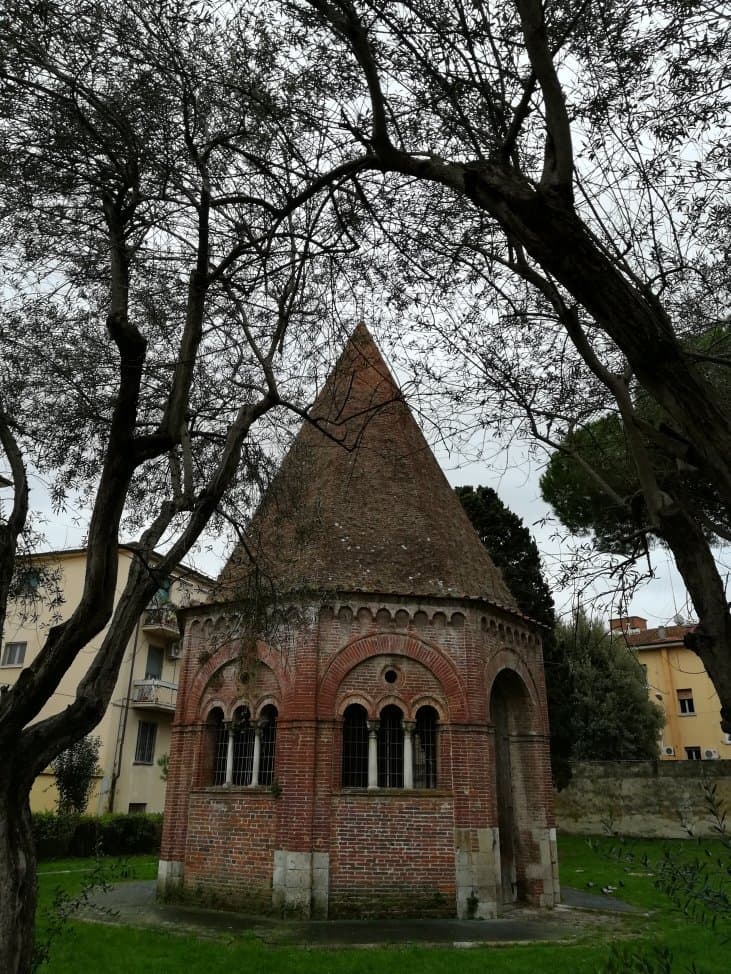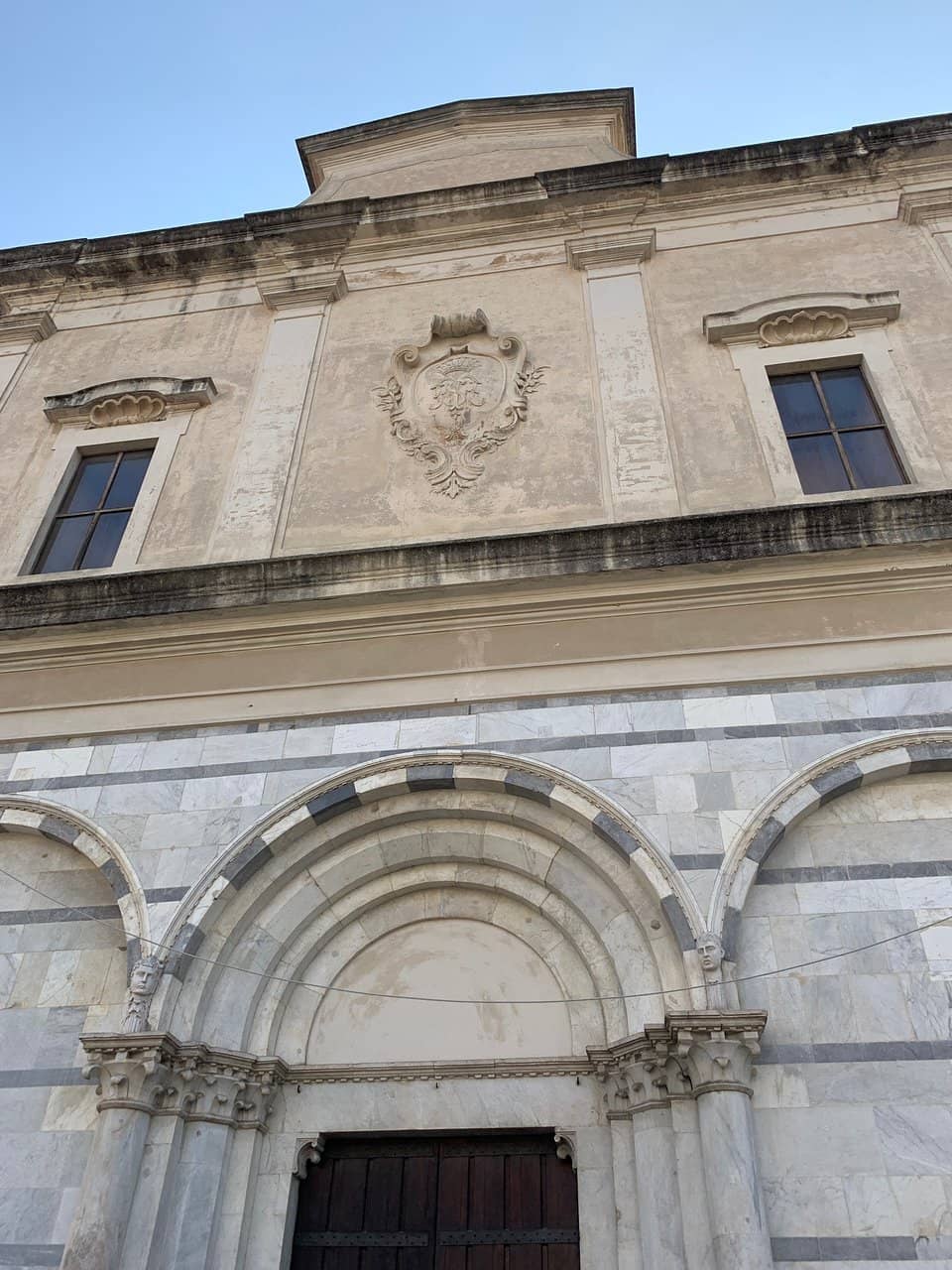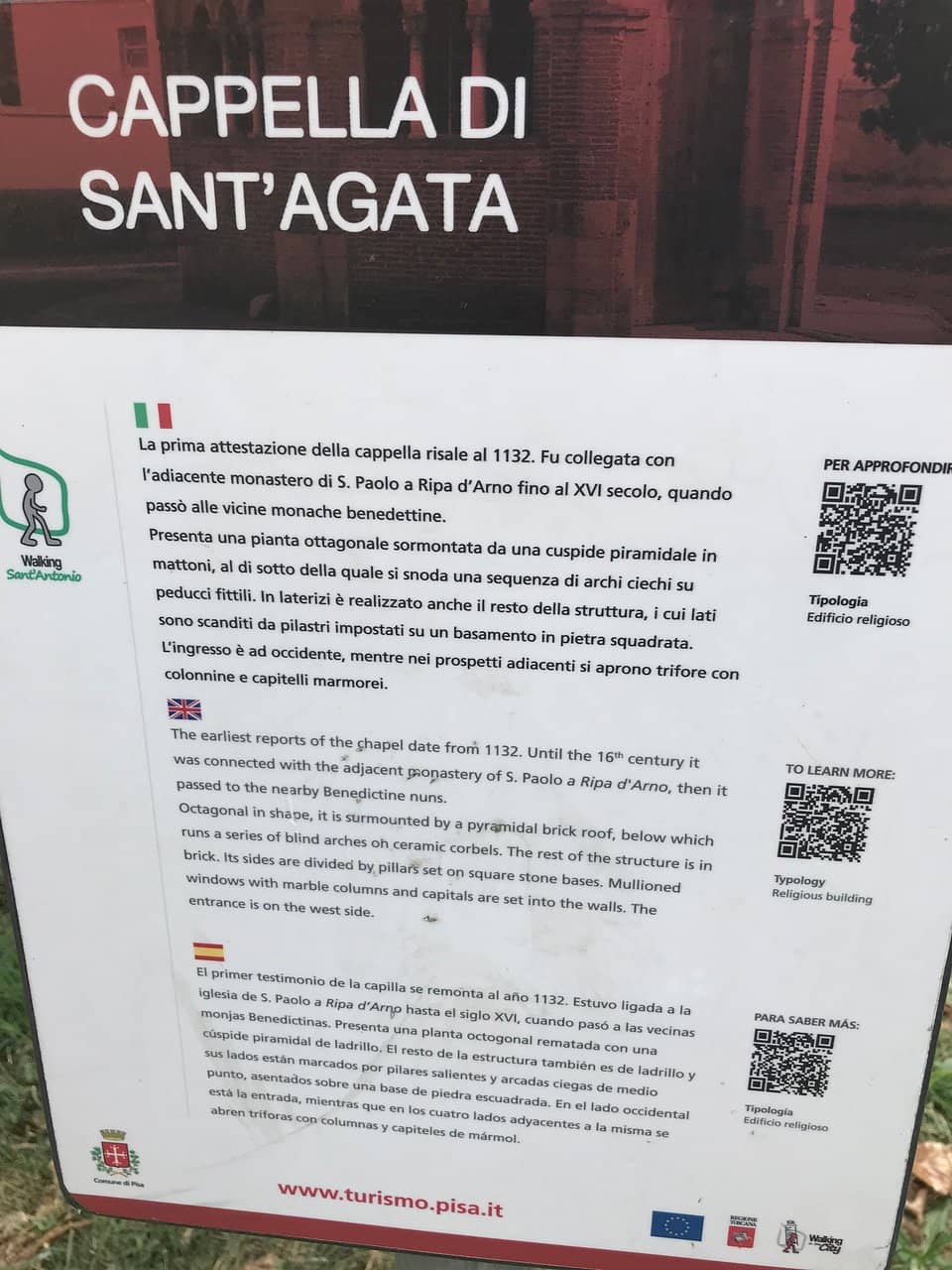
Chapel of Sant'Agata
A 14th-century Catalan Gothic masterpiece in Barcelona's historic heart, offering a serene escape and artistic treasures.
Highlights
Must-see attractions

Social
From TikTok & Reddit
Best Time
Fewer crowds, serene atmosphere

Chapel of Sant'Agata
Best Time
Fewer crowds, serene atmosphere
Highlights
Must-see attractions
A 14th-century Catalan Gothic masterpiece in Barcelona's historic heart, offering a serene escape and artistic treasures.
"A beautiful, serene oasis in the Gothic Quarter, showcasing stunning medieval architecture and art."

📍 Location, Location, Location
Find this Gothic beauty in Plaça del Rei, right in Barcelona's historic Gothic Quarter. :world_map:
🏛️ Part of a Museum
It's integrated with the Barcelona History Museum (MUHBA), so check combined ticket options. :ticket:

Highlights
Discover the most iconic attractions and experiences
Catalan Gothic Architecture
Plaça del Rei
Marvel at the intricate details of this 1302 Gothic structure, a true architectural gem in the heart of Barcelona.
Retaule del Conestable
Interior
Admire the 15th-century altarpiece by Jaume Huguet, a significant work of Catalan Gothic art.

Gothic Ceiling Details
Interior
Look up to appreciate the stunning Gothic vaulting and architectural intricacies of the chapel's ceiling.
Plans like a pro.
Thinks like you
Planning Your Visit
Gothic Gem in the Gothic Quarter
A Glimpse into Royal History
Best Times
Insider Tips
from TikTok, Instagram & Reddit
📍 Location, Location, Location
Find this Gothic beauty in Plaça del Rei, right in Barcelona's historic Gothic Quarter. :world_map:
🏛️ Part of a Museum
It's integrated with the Barcelona History Museum (MUHBA), so check combined ticket options. :ticket:
🤫 Quiet Oasis
Enjoy the peaceful ambiance; it's a serene escape from the city's hustle. :bird:
📸 Capture the Details
Don't miss the stunning Gothic ceiling and the impressive altarpiece. :camerawithflash:
Tips
from all over the internet
📍 Location, Location, Location
Find this Gothic beauty in Plaça del Rei, right in Barcelona's historic Gothic Quarter. :world_map:
🏛️ Part of a Museum
It's integrated with the Barcelona History Museum (MUHBA), so check combined ticket options. :ticket:
🤫 Quiet Oasis
Enjoy the peaceful ambiance; it's a serene escape from the city's hustle. :bird:
📸 Capture the Details
Don't miss the stunning Gothic ceiling and the impressive altarpiece. :camerawithflash:
What Travellers Say
Reviews Summary
Visitors often describe the Chapel of Sant'Agata as a serene and beautiful oasis within the bustling Gothic Quarter. Its historical significance, stunning Gothic architecture, and impressive altarpiece are frequently praised. Some note that it's best appreciated as part of a visit to the Barcelona History Museum.
"It seems that the cult of Saint Agata arrived in Pisa probably with the liberation of Catania from the Saracens. The first document to attest to this is that of Pope Honorius II (21 July 1126), who allowed the Archbishop of Pisa to celebrate the feast of St Agatha on 5 February. On that date and for the next two days, the saint’s alleged skull was exhibited and is still preserved in the church of San Paolo a Ripa d’Arno. At the end of the 19th century, its display still aroused great devotion on the part of nursing mothers. The importance of the cult is also testified by the octagonal oratory dedicated to her, built within the monastic complex around the middle of the 12th century."
Rider On Foot
"I visited this chapel last year. It's like an oasis in the city - very serene, quiet, with birds chirping. It is a magical place."
Jonas
"Damn, this whole district could be a tourist spot"
Sasha Tråp
What People Like
What People Dislike
Frequently Asked Questions
🚇 🗺️ Getting There
The Chapel of Sant'Agata is located in the Plaça del Rei, within Barcelona's Gothic Quarter. You can easily reach it by metro to Jaume I (L4) or Liceu (L3) stations, followed by a short walk. Many visitors find it a pleasant stroll from other central attractions. :metro:
Yes, it's situated in a central and well-connected area of Barcelona. Walking is a great way to explore the Gothic Quarter and discover the chapel. :walking:
Wandering on foot is highly recommended to soak in the atmosphere of the Gothic Quarter. The chapel is a key stop within this historic district. :street_view:
🎫 🎫 Tickets & Entry
The Chapel of Sant'Agata is often visited as part of the Barcelona History Museum (MUHBA). Check the official MUHBA website for current admission fees and opening hours, as access might be included with a museum ticket. :ticket:
Opening hours can vary as it's part of the MUHBA. It's best to consult the Barcelona History Museum's official website for the most up-to-date information on when you can visit. :clock:
Typically, access to the chapel is integrated with the MUHBA. It's advisable to check if separate entry is possible or if a museum ticket is required for access. :information_desk:
Yes, the chapel has been known to host classical music recitals, particularly harpsichord performances. Keep an eye on local event listings for potential concerts. :musical_note:
📸 📸 Photography
Photography policies can change, but generally, non-flash photography for personal use is often permitted inside historical sites like this. Always check for signage or ask staff if unsure. :camerawithflash:
Focus on the intricate Gothic ceiling, the detailed altarpiece, and the overall architectural grandeur. The play of light through the windows can also create beautiful shots. :iphone:
The Plaça del Rei itself is a picturesque square, offering great opportunities to capture the chapel's exterior within its historic setting. :building_construction:
🎫 🏛️ History & Art
The Chapel of Sant'Agata was built in 1302, making it a significant example of Catalan Gothic architecture. :calendar:
It was commissioned by King Jaume II and Queen Blanca d’Anjou, highlighting its royal importance. :crown:
The altarpiece, known as the 'Retaule del Conestable,' was painted by Jaume Huguet in 1464 and is a notable work of Catalan Gothic art. :art:
The chapel was built to celebrate the capture of the city of Palermo in 1063, dedicating it to the Holy Martyr of Catania. :crossed_swords:
For Different Travelers
Tailored advice for your travel style
👨👩👧 Families with Kids
Focus on the visual aspects: Point out the impressive ceiling and the detailed altarpiece. You can frame it as a visit to a 'royal church' from a long time ago. The surrounding Plaça del Rei also offers open space for kids to move around briefly before or after your visit. :child:
🏛️ History Buffs & Art Lovers
Delve into the stories behind its commission by King Jaume II and Queen Blanca d’Anjou. The chapel offers a tangible connection to Barcelona's past, providing a deeper understanding of the region's medieval heritage. Don't miss the chance to admire the detailed craftsmanship and artistic narratives within. :scroll:
Deep Dives
In-depth insights and expert knowledge
Architectural Marvel: Catalan Gothic
Key features to admire include its imposing facade and the intricate Gothic ceiling. The chapel's construction by Bertran Riquer showcases the skill of medieval artisans. Its historical significance is amplified by its association with King Jaume II and Queen Blanca d’Anjou, who commissioned its creation.
This architectural style reflects a period of significant cultural and economic development in Catalonia. The chapel stands as a testament to this era, offering visitors a tangible connection to Barcelona's rich past. Its serene atmosphere provides a stark contrast to the bustling city outside, making it a peaceful place for contemplation and appreciation of historical artistry.
Artistic Treasures: The Altarpiece
The altarpiece depicts various scenes and figures, offering insights into religious devotion and artistic conventions of the 15th century. Its presence within the chapel underscores the chapel's importance as a site of worship and patronage. Visiting the chapel provides an opportunity to see this masterpiece up close and appreciate its historical and artistic value.
When exploring the chapel, take time to study the craftsmanship of the altarpiece. Its intricate details and the quality of the painting are a testament to Huguet's skill and the artistic flourishing of the period. It's a highlight that truly enriches the experience of visiting this historic site.






Social
from TikTok, Instagram & Reddit